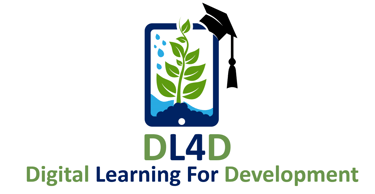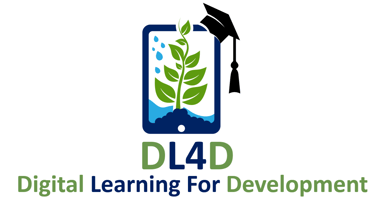The Future of Transactions: How GenAI is Transforming Payments
Through increased security, better fraud detection, and the ability to create highly customized client experiences, generative AI is revolutionizing the payments sector. GenAI is boosting digital payments' efficiency and trust by powering intelligent chatbots, predictive analytics, and transaction process simplification. Global payment networks can become faster, smarter, and more frictionless when financial institutions adopt this technology.

GenAI is a branch of artificial intelligence that focuses on producing new content that replicates human-generated data, such as text, photos, audio, or video. With the use of machine learning (ML), GenAI models can produce new material that utilizes the patterns and structures they discover from massive datasets, in contrast to traditional AI systems that are usually task-oriented and dependent on preset rules or patterns.
GenAI in Payments
By improving personalization, security, and the efficiency of digital payments, GenAI has the potential to completely transform payments in a number of ways that will benefit both consumers and companies.
From marketing and sales to customer onboarding, know-your-customer (KYC), customer support, and risk management, it may offer infallible solutions to handle every stage of the payments lifecycle.
Marketing and Sales
a) Campaigns, consumer segmentation, and personalization
GenAI models can create suggestions for customized goods, services, or payment methods by analyzing transaction histories and consumer preferences. This improves the consumer experience by giving customers personalized recommendations and making transactions simple, which increases customer loyalty. Additionally, it can assist with customer-specific dynamic content generation.
b) Production of content
By assisting with the creation of targeted content that may be used to improve outbound customer communications, GenAI can increase the efficacy of marketing and sales. Additionally, the information and visuals can be altered to fit the needs of different customer categories. For example, promoting some services with relatable and visually appealing content might raise awareness of them among younger audiences.
c) Dynamic pricing for products
In order to produce dynamic pricing plans for goods and services, GenAI models can analyze inventory data, consumer behavior, and market dynamics. This will make it possible for banks and FinTechs to optimize real-time pricing according to supply, demand, and other pertinent variables.
Insurance companies, banks, and FinTechs can use dynamic pricing models for investment portfolios, insurance premiums, and loans. Pricing is modified by these models according to client preferences, market conditions, and risk assessments.
Processing of Payments
a) Risk administration and identification of fraud
Dynamic risk-scoring models that evaluate the risks connected to payment transactions in real time can be created using GenAI. The creation of more focused risk management plans is made possible by these models' ability to give risk scores based on a variety of variables, including transaction volume, frequency, location, and user behavior.
GenAI models assist anomaly detection systems by learning common payment patterns and producing fictitious fraud scenarios. Additionally, they analyze market patterns and transactional data to anticipate dangers, strengthening risk management and reducing financial fraud. This guarantees that there will be no money laundering or fraudulent activities during the payment processing.
For instance, a Nordic-Baltic banking company has reduced false positives by detecting forged transactions using the generative adversarial network (GAN) model.
b) Payments made during conversations
Conversational payments are made possible by GenAI-powered chatbots and virtual assistants, which allow users to transact, check balances, and get assistance through natural language exchanges. This is a crucial value-added service to draw clients and facilitates payment processing.
Customer Onboarding
With intelligent and automated identity verification solutions, GenAI can manage new customer onboarding from the very first encounter while guaranteeing regulatory compliance to improve both precision and effectiveness. Additionally, it can speed up the onboarding process by using intelligent document processing and utilizing customer onboarding papers to do real-time KYC/AML checks.
To improve the entire experience, GenAI enables systems to adjust to user preferences and suggest customized customer journeys.
For instance, To guarantee adherence to AML and KYC laws in several jurisdictions, a multinational American payment card company has deployed a GenAI system that evaluates regulatory papers and makes recommendations.
Customer support
a) Assistant for smart agents
GenAI can enhance human agents by giving customer service representatives access to knowledge repositories and real-time recommendations. Additionally, they can be utilized to create customized messages for clients.
b) Better possibilities for self-service
Using user behavior and previous interactions, GenAI may be used to personalize FAQs and produce clear, succinct information. Additionally, it can be used to create interactive guides and lessons that assist clients in finding answers to their own questions.
c) Proactive consumer outreach and chatbots
Through natural language processing (NLP), GenAI can enable chatbots and virtual assistants that help customers with payment-related questions, offer customer service, and streamline transactions.
Despite sharing the same technology, GenAI and AI chatbots have different uses. Service agents can receive personalized information and content by utilizing GenAI's content production capabilities. AI chatbots, on the other hand, are made to mimic direct user conversations via voice or text messages.
For instance: Recently, a prominent UK commercial bank stated that it would be utilizing GenAI to improve its current virtual assistant. With conversational engagements, it is anticipated that this will give clients access to a greater variety of information.
Operations and delivery
a) Process automation
A large variety of middle-office tasks are involved in payment processes; the majority of these tasks are rather intricate and entail some client engagement. Commercial contracts, RFPs, account plans, and other duties can be completed by GenAI or automated. Delivery may be streamlined and repetitive tasks automated with GenAI.
b) Quicker development of code
Legacy systems continue to be a major source of dependence for many traditional businesses. Bug identification, code repair, and user acceptability testing can all be aided by GenAI. Additionally, GenAI can be used to analyze current codebases and libraries and suggest different methods or solutions.
C) Innovation in goods and services
With its computational and documentation skills, GenAI helps teams create innovative product and service designs while also accelerating delivery timelines by allowing them to concentrate on critical tasks.
For instance, in 2024, one of India's biggest private banks will launch a website driven by LLM. Additionally, the bank aims to hire a private LLM to create business requirement documentation and credit assessments.
Contact us
Whether you have a request, a query, or want to work with us, use the form below to get in touch with our team.




